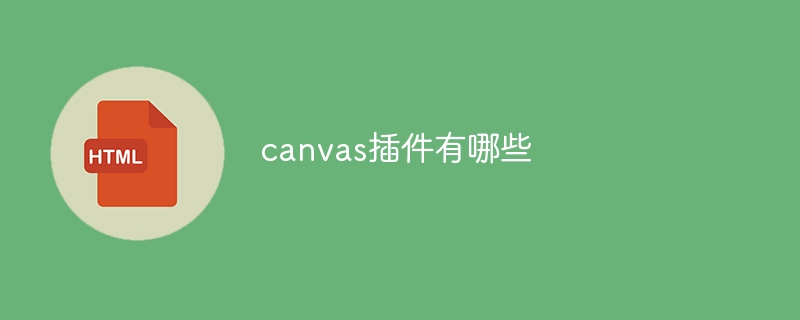This article mainly introduces to you the relevant information about using toDataURL() in canvas to convert images into dataURL(base64). The article introduces it in detail through sample code, which has certain reference learning value for everyone's study or work. Friends who need it, please follow the editor to learn together. I hope it can help everyone.
Benefits of converting images to base64
Converting images to Base64 encoding allows you to easily insert images into other web pages and editors without uploading files. This is extremely convenient for some small pictures, because you don't need to find a place to save the picture.
Convert the image to base64 encoding, which is generally used for small images on the web. It can not only reduce the number of image requests (collected into js and css codes), but also prevent problems such as relative paths. Resulting in a 404 error for the image.
Introduction
Assume an application scenario: Due to some special reasons, the image path is requested from the server, and the base64 dataURL of the corresponding image is required to be obtained through this path. In this scenario, we first infer that the image path is accessible, and we also need a way to convert the image to a dataURL.
How do we achieve it?
dataURL
Let’s briefly review the syntax of the orthodox dataURL, which will help us check whether the converted content is correct. A complete dataURI should look like this:
data:[<mediatype>][;base64],<data></data></mediatype>
The mediatype declares the file type, following MIME rules, such as "image/png", "text/plain"; followed by the encoding type, here we only cover base64 ;The next step is the encoded content of the file. We often see the src of the img tag in HTML written like this:
src="data:image/gif;base64,R0lGODdhMAAwAPAAAAAAAP///ywAAAAAMAAwAAAC8IyPqcvt3wCcDkiLc7C0qwyGHhSWpjQu5yqmCYsapyuvUUlvONmOZtfzgFzByTB10QgxOR0TqBQejhRNzOfkVJ+5YiUqrXF5Y5lKh/DeuNcP5yLWGsEbtLiOSpa/TPg7JpJHxyendzWTBfX0cxOnKPjgBzi4diinWGdkF8kjdfnycQZXZeYGejmJlZeGl9i2icVqaNVailT6F5iJ90m6mvuTS4OK05M0vDk0Q4XUtwvKOzrcd3iq9uisF81M1OIcR7lEewwcLp7tuNNkM3uNna3F2JQFo97Vriy/Xl4/f1cf5VWzXyym7PHhhx4dbgYKAAA7"
This img refers to the dataURL encoded in base64. As long as the browser supports it, it can be decoded into a gif image and rendered.
.toDataURL()
The FileReader object also has similar methods, such as .readAsDataURL(), but it only accepts file or blob types, and these two types can generally only be passed through Get the files attribute of the element, or use the Blob() constructor to manually create a new object. The embarrassing thing is that we currently only have the image path, which is subject to the browser's security policy. The files attribute of is read-only, and the Blob() constructor only accepts file content. Both methods are It cannot be obtained directly through the image path. The hypothetical application scenario above forces us to first consider how to obtain the image content through the path. is OK and can be drawn into
Everything is ready, we only need to put the image obtained by into
canvas.toDataURL([type, encoderOptions]);
canvas is the DOM element
It should be noted that before converting to dataURL, you must first ensure that the image is successfully loaded, so the .toDataURL() method should be written in the onload asynchronous event of . Now let’s implement a functional function:
function getBase64(url){
//通过构造函数来创建的 img 实例,在赋予 src 值后就会立刻下载图片,相比 createElement() 创建 <img alt="The toDataURL() method in canvas converts images to dataURL (base64)" > 省去了 append(),也就避免了文档冗余和污染
var Img = new Image(),
dataURL='';
Img.src=url;
Img.onload=function(){ //要先确保图片完整获取到,这是个异步事件
var canvas = document.createElement("canvas"), //创建canvas元素
width=Img.width, //确保canvas的尺寸和图片一样
height=Img.height;
canvas.width=width;
canvas.height=height;
canvas.getContext("2d").drawImage(Img,0,0,width,height); //将图片绘制到canvas中
dataURL=canvas.toDataURL('image/jpeg'); //转换图片为dataURL
};
}
A conversion function that can be called at any time is completed. It will return an entire dataURL string after the image is loaded.
Improvement
The onload event ensures that the conversion task is executed after loading, but it brings a new problem - the dataURL will only be returned after the image is loaded, and we cannot determine when the image is loaded. Complete loading. If the dataURL needs to be processed later (such as passing it to other servers), it is necessary to add a callback. This can ensure that the subsequent processing task is executed after the dataURL is successfully obtained. We need to modify getBase64():
function getBase64(url,callback){ //添加一个回调参数
...
Img.onload=function(){
...
canvas.getContext("2d").drawImage(Img,0,0,width,height);
dataURL=canvas.toDataURL('image/jpeg');
callback?callback(dataURL):null; //调用回调函数
};
}
Add callback during execution:
getBase64('//upload.jianshu.io/users/upload_avatars/555630/fdd1b798e6b0.jpg',(dataURL)=>{
console.log(dataURL);
});
That’s it. If compatibility is not considered, maybe we can use promises and generators to implement it, and it will be more perfect if we add some error handling.
Related recommendations:
html5 Canvas realizes image rotation
jquery plug-in canvaspercent.js realizes the percentage round cake effect example sharing
The above is the detailed content of The toDataURL() method in canvas converts images to dataURL (base64). For more information, please follow other related articles on the PHP Chinese website!
 Vue和Canvas:如何实现手写签名和手势识别功能Jul 18, 2023 am 08:49 AM
Vue和Canvas:如何实现手写签名和手势识别功能Jul 18, 2023 am 08:49 AMVue和Canvas:如何实现手写签名和手势识别功能引言:手写签名和手势识别功能在现代应用程序中越来越常见,它们可以为用户提供更加直观和自然的交互方式。Vue.js作为一款流行的前端框架,搭配Canvas元素可以实现这两个功能。本文将介绍如何使用Vue.js和Canvas元素来实现手写签名和手势识别功能,并给出相应的代码示例。一、手写签名功能实现要实现手写签
 Canvas的优势有哪些Aug 17, 2023 pm 04:52 PM
Canvas的优势有哪些Aug 17, 2023 pm 04:52 PMcanvas的优势有强大的绘图功能、高性能、跨平台兼容性、支持多种图形格式、可以与其他Web技术集成、可以实现动态效果和可以实现复杂的图像处理。详细介绍:1、Canvas提供了丰富的绘图功能,可以绘制各种形状、线条、文本、图像等;2、Canvas在浏览器中直接操作像素,因此具有很高的性能;3、Canvas是基于HTML5标准的一部分,可以在各种现代浏览器上运行等等。
 canvas特效有哪些Aug 18, 2023 pm 04:12 PM
canvas特效有哪些Aug 18, 2023 pm 04:12 PMcanvas特效有粒子效果、线条动画、图片处理、文字动画、音频可视化、3D效果、游戏开发等。详细介绍:1、粒子效果,通过控制粒子的位置、速度和颜色等属性来实现各种效果,如烟花、雨滴、星空等;2、线条动画,通过在画布上绘制连续的线条,创建出各种动态的线条效果;3、图片处理,通过对图片进行处理,可以实现各种炫酷的效果,如图片切换、图片特效等;4、文字动画等等特性。
 如何利用Vue和Canvas创建逼真的天气动态背景Jul 17, 2023 am 08:33 AM
如何利用Vue和Canvas创建逼真的天气动态背景Jul 17, 2023 am 08:33 AM如何利用Vue和Canvas创建逼真的天气动态背景引言:在现代网页设计中,动态背景效果是吸引用户眼球的重要元素之一。本文将介绍如何利用Vue和Canvas技术来创建一个逼真的天气动态背景效果。通过代码示例,你将学习如何编写Vue组件和利用Canvas绘制不同天气场景,从而实现一个独特而吸引人的背景效果。步骤一:创建Vue项目首先,我们需要创建一个Vue项目。
 canvas插件有哪些Aug 17, 2023 pm 05:00 PM
canvas插件有哪些Aug 17, 2023 pm 05:00 PMcanvas插件有Fabric.js、EaselJS、Konva.js、Three.js、Paper.js、Chart.js和Phaser。详细介绍:1、Fabric.js 是一个基于Canvas的开源 JavaScript 库,它提供了一些强大的功能;2、EaselJS是CreateJS库中的一个模块,它提供了一套简化了Canvas编程的API;3、Konva.js等等。
 Vue和Canvas:如何实现视频播放器的定制化界面Jul 18, 2023 pm 02:49 PM
Vue和Canvas:如何实现视频播放器的定制化界面Jul 18, 2023 pm 02:49 PMVue和Canvas:如何实现视频播放器的定制化界面引言:在现代互联网时代,视频已经成为人们生活中必不可少的一部分。为了提供良好的用户体验,许多网站和应用程序都提供了自定义的视频播放器界面。本文将介绍如何使用Vue和Canvas技术实现一个定制化的视频播放器界面。一、前期准备在开始之前,您需要确保您已经安装了Vue和Canvas,并且熟悉这两种技术的基本用法
 Vue和Canvas:如何实现图片的马赛克效果Jul 16, 2023 pm 10:17 PM
Vue和Canvas:如何实现图片的马赛克效果Jul 16, 2023 pm 10:17 PMVue和Canvas:如何实现图片的马赛克效果引言:随着Web技术的不断发展,越来越多的人开始使用Vue框架来构建交互式的前端应用。而在前端开发中,常常需要为用户提供图片处理的功能。本文将介绍如何利用Vue和Canvas实现图片的马赛克效果,为用户带来更好的视觉体验。一、马赛克效果概述马赛克效果是一种将图像的细节部分进行像素化处理,使得整个图像变得模糊和抽象
 canvas引擎有哪些Aug 17, 2023 pm 05:29 PM
canvas引擎有哪些Aug 17, 2023 pm 05:29 PMcanvas引擎有Three.js、Pixi.js、EaselJS、Konva.js、Paper.js等。详细介绍:1、Pixi.js,提供了简单易用的API,支持精灵、纹理、滤镜等功能,同时还提供了丰富的工具和插件,方便开发者进行交互、动画和优化等操作;2、Pixi.js,提供了简单易用的API,支持精灵、纹理、滤镜等功能,还提供了丰富的工具和插件;3、EaselJS等等。


Hot AI Tools

Undresser.AI Undress
AI-powered app for creating realistic nude photos

AI Clothes Remover
Online AI tool for removing clothes from photos.

Undress AI Tool
Undress images for free

Clothoff.io
AI clothes remover

AI Hentai Generator
Generate AI Hentai for free.

Hot Article

Hot Tools

ZendStudio 13.5.1 Mac
Powerful PHP integrated development environment

MinGW - Minimalist GNU for Windows
This project is in the process of being migrated to osdn.net/projects/mingw, you can continue to follow us there. MinGW: A native Windows port of the GNU Compiler Collection (GCC), freely distributable import libraries and header files for building native Windows applications; includes extensions to the MSVC runtime to support C99 functionality. All MinGW software can run on 64-bit Windows platforms.

Notepad++7.3.1
Easy-to-use and free code editor

VSCode Windows 64-bit Download
A free and powerful IDE editor launched by Microsoft

SAP NetWeaver Server Adapter for Eclipse
Integrate Eclipse with SAP NetWeaver application server.





